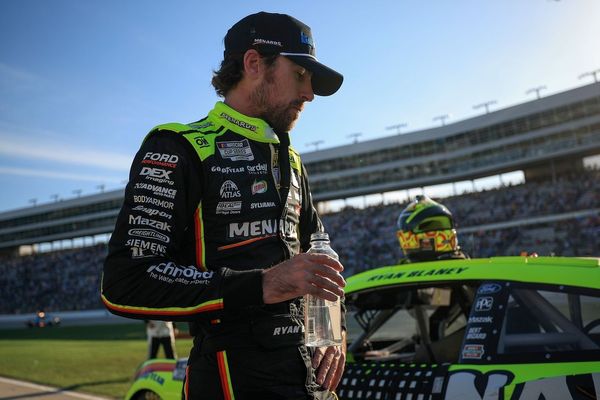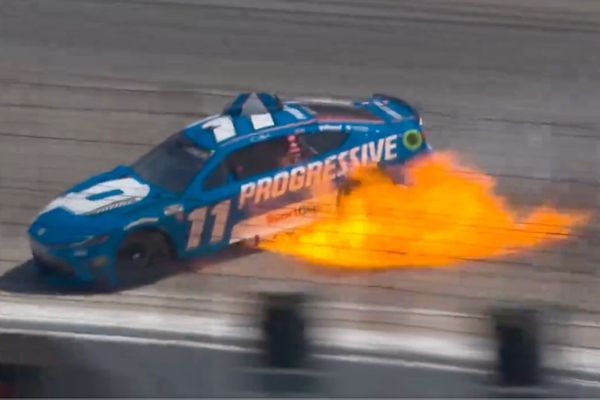When I was growing up in a field in Tyrone with only a stick to play with, a 500 was a big bike.
Maybe it was because Dad raced Norton 500s when he wasn’t working in his bike repair business in the front of our Nissen hut while we lived down the back and looked out of the window, which was cheaper than a TV.
There wouldn’t have been much point in a TV anyway, since we didn’t have electricity.
When I got my own first bike, it was, appropriately enough, another 500 – an Enfield Bullet that I rode from Delhi to Belfast in 1998, with Paddy Minne on another, for my first bike adventure book, Way to Go.
Paddy and I felt like kings of the road as we trundled through Pakistan, Iran, Turkey, Bulgaria, Romania and Hungary – until the day in Austria we met a Belgian couple returning from a tour of Eastern Europe on their Honda Gold Wing.
They were model Belgians – he sported a walrus moustache and a beer gut, and she worked in a chocolate factory.
Previously I had thought the Enfield a Charles Atlas of motorcycles, but sitting beside theirs, it looked like the seven-stone weakling who always gets sand kicked in his face.
For the Gold Wing was not so much a motorcycle as a living room on wheels, complete with central heating, a hi-fi and a pet turtle in his little home in the top box.
Still, they were as envious of our adventure as we were of their bike, and, ever since then, I’ve wondered how much power you really need to have fun on a bike. Unless you’re a bike god, you’re never going to come close to using the potential of a 200hp machine even on a track, and I had a blast riding the 22hp Royal Enfield Himalayan from Delhi to Leh in the Himalayas a couple of years ago.
All of which brings me, naturally, to the 45bhp Kawasaki Z400 I was sitting on.
In that unique Kwacker green, which looks like Kermit’s liver after a hard night out with Miss Piggy, combined with its narrow waist and wide tank, it looks like a giant and slightly malevolent insect.
The mirrors are half useful and half useless, unless you like admiring your elbows, and the dash is a weird mixture of classical and contemporary, with the tacho sweeping in a Roman arch over a digital readout of speed, gear, fuel and temperature.
Not that I’ve anything against Roman architecture. You just don’t usually see it on motorbikes, that’s all.
Anyway, it may be a bit weird and a bit dull, but it’s splendidly legible, even in bright sunlight, so Form 0, Function 1 for that one.
Ride off, and acceleration is more than sprightly enough to beat cars away from the lights and overtake them on the road, allied to a sweet six-speed box and featherlight clutch.
As you’d expect with only 45bhp to hand, the engine needs a mild thrashing to keep it interested and the sweet spot on a winding country road was fourth or five gear and keeping the revs singing between maximum torque at 8,000rpm and peak power at 10,000rpm, after which it runs out of oomph slightly when you hit the redline at 12,000rpm.
The riding position is compact but comfortable enough, tipping you very slightly forward on to the wide bars and combining with perfect balance and a kerb weight of only 167kg to make for beautifully light and neutral handling. That weight, by the way, is 3kg lighter than the Z300 it replaces.
The suspension, like Cinderellla’s favourite bed, is nicely balanced between firm and plush, although the shortish wheelbase creates a slightly choppy ride on rough surfaces.
There’s only one disc up front, but the bike’s so light that’s all you need, and the rear brake, although lacking in feel a bit, is progressive and effective enough if needed for trailing into downhill corners.
All in all, a perfect bike for commuting during the week then going for a weekend blast with your mates and feeling like a king of the road.
As long as you don’t run into a Belgian turtle, that is.
• Test bike supplied by Phillip McCallen Motorcycles, phillipmccallen.com
The Facts
Price: £4,999
Engine: 399cc parallel twin
Power: 45bhp @ 10,000rpm
Torque: 28 lb ft @ 8,000rpm
Colours: Green/black; red/black
Harrowing news
Motorcyclists in Harrow, North London, are most likely to suffer a motorbike accident which wasn’t their fault, according to a new study.
The research, from Carole Nash, analysed 16 years of claims data and discovered that the postcodes which suffer the highest rate of non-fault accidents are all in London, with the worst Harrow, at 66%, followed by Croydon, at 59%, and Sutton, at 57%.
Over half of motorbike claims in Dartford, Rochester, Canterbury and Truro aren’t the rider’s fault, making these four cities the unluckiest postcodes outside of the capital.
Conversely, the Scottish town of Galashiels has the lowest rate of non-fault accidents, with 26%.







